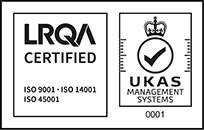Call us free on 0808 168 9540
Call us free on 0808 168 9540

Phlorum provides phase 1 and phase 2 water vole surveys across southern England, including Sussex, London, Surrey, Kent, Dorset, Hampshire and Wiltshire.
The national water vole population has declined significantly over the last century, and it is now protected in the UK under Schedule 5 of the Wildlife and Countryside Act (1981). It is illegal to kill, injure or capture a water vole or intentionally or recklessly disturb, obstruct, damage, or destroy a burrow.
Water volves are legally protected and it is illegal to kill or injure them. As a result, if they are found on a site they should be reported and protected.
Water voles inhabit burrows along the banks of watercourses. They are mainly found in slow-flowing rivers and streams. They live in colonies spread along watercourses and prefer sites with a wide swathe of riparian habitat.
Phlorum staff can provide advice for developments concerned about impacting water voles. Our team of ecology consultants carry out phase 1 and phase 2 water vole surveys and devise appropriate mitigation strategies, including habitat creation and management, where required.
The field signs for water voles are their droppings (often described as being ‘tic-tac’ in shape), feeding signs, and neat holes in the sides of watercourse banks. The dropping are 8-12mm in length and 4-5mm in width. The dropping are normally found in latrines and in small heaps close to water.
The characteristic feeding sign of water voles is nibbled grass in small piles. However, field voles and bank voles can leave similar signs so it is important to look for other signs, such as droppings.
A water vole habitat is generally within 10m of a water course.
Water vole surveys may be conducted between March and September. Although this species is active all year round, it is markedly less active during the winter.
Contact our team of ecology consultants to learn more about our water vole surveys and mitigation and for your free, no-obligation water vole survey consultation.










